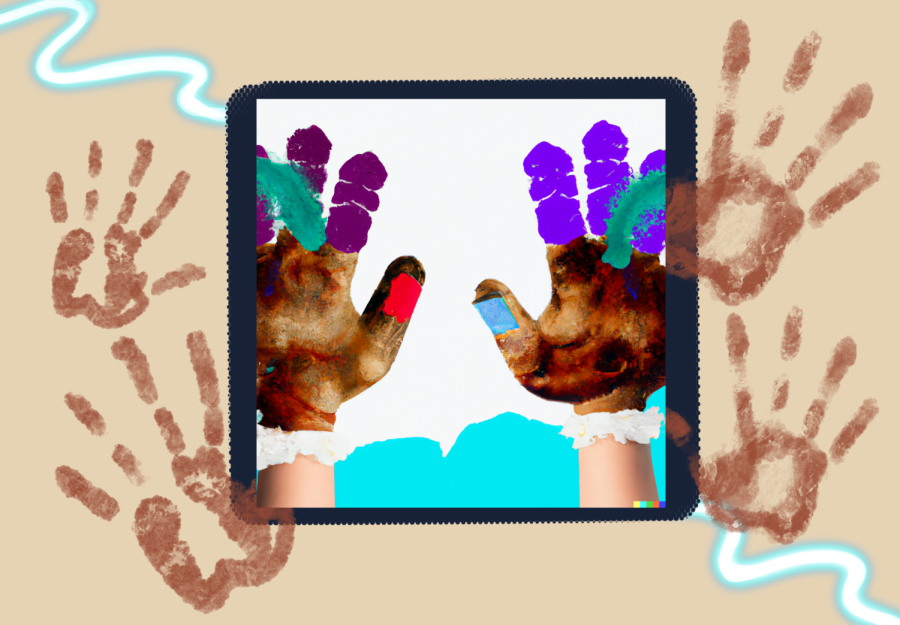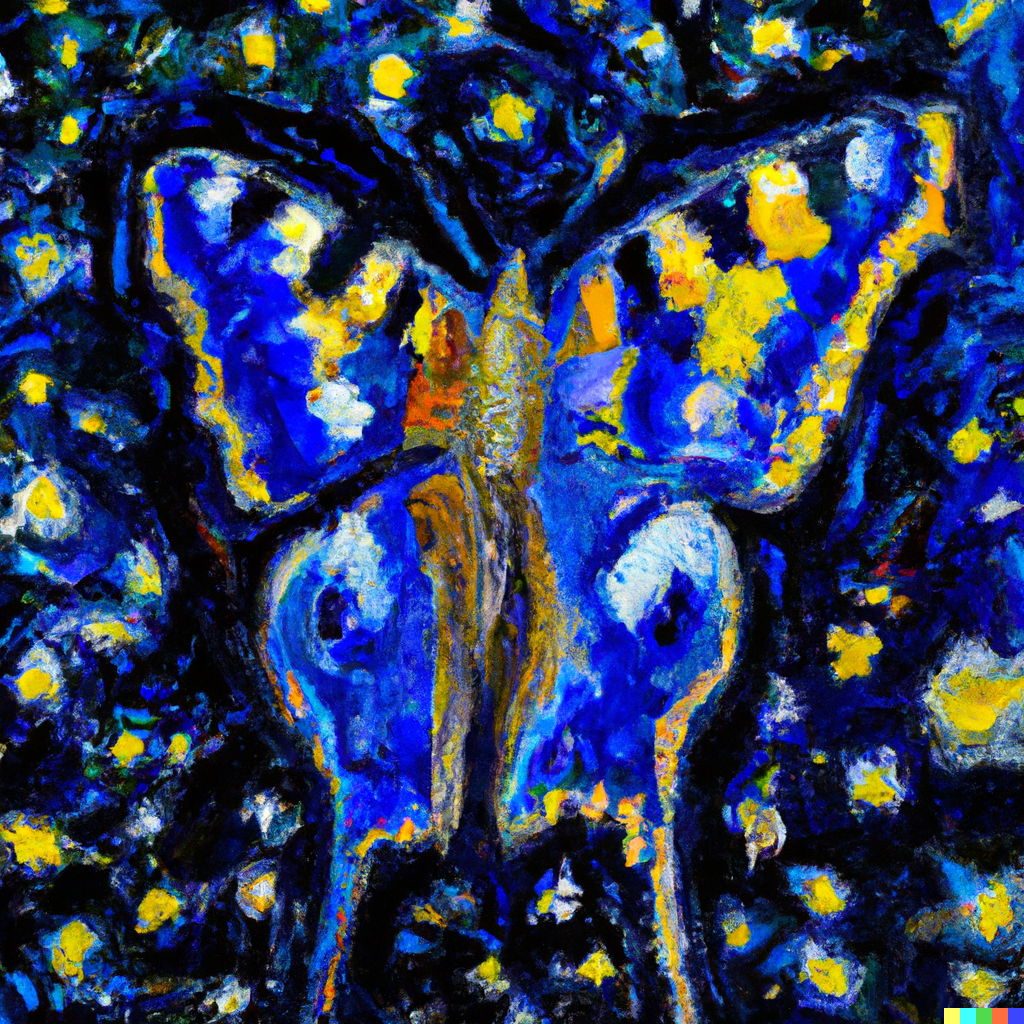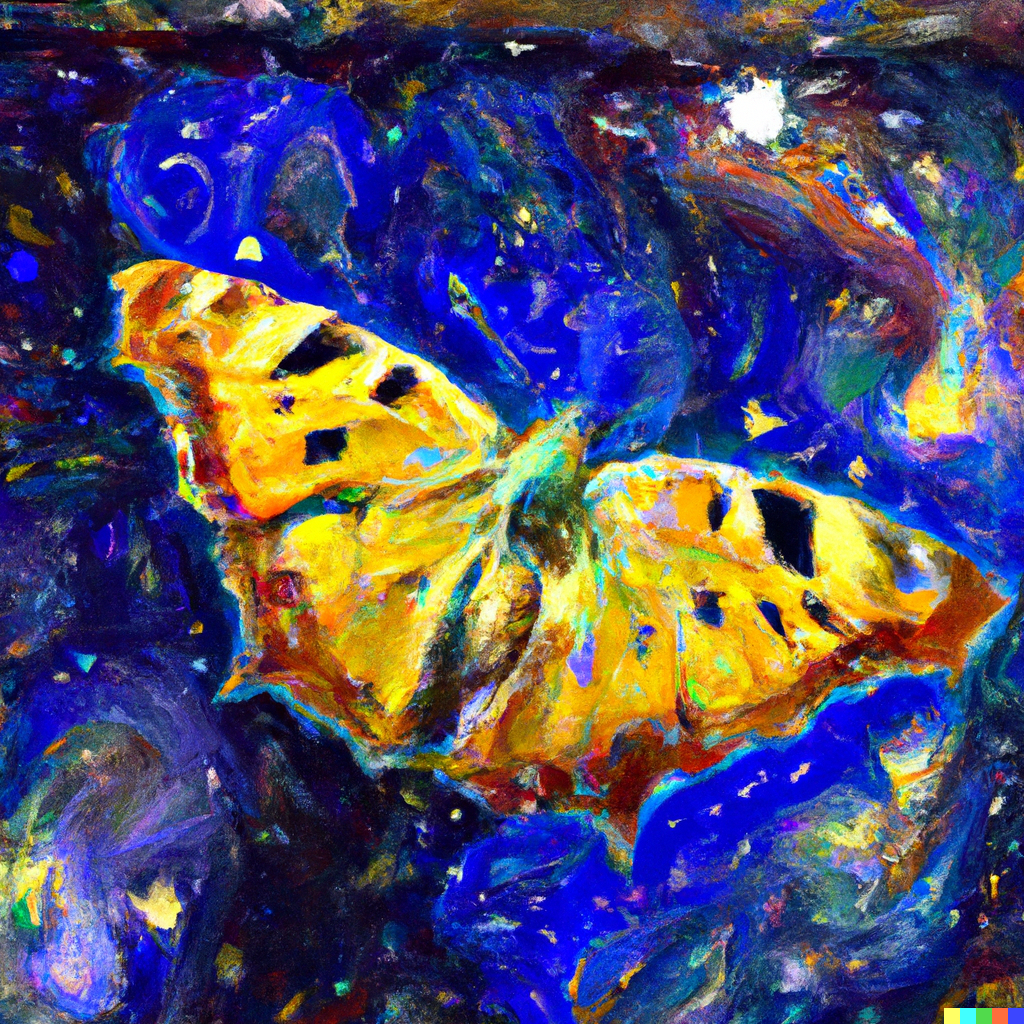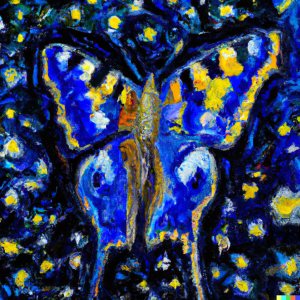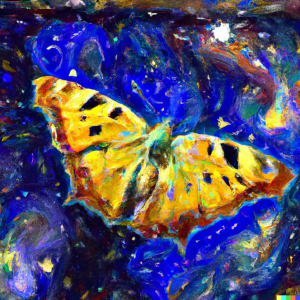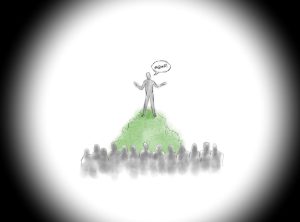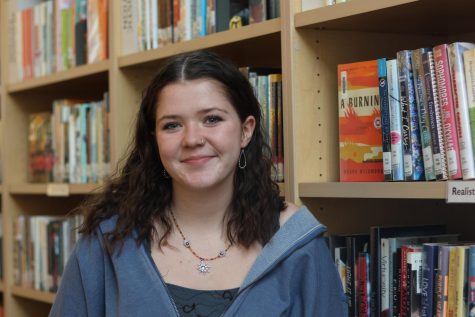Technology Is No Substitute for Soul — Are AI Images Threatening the Creative Process?
Introducing AI technology into the art world is dangerous. Having the ease of creating new visual concepts right at your fingertips within a matter of seconds is compromising the humanity behind the creative process. The inner image in this photo illustration was created using DALL-E 2, an AI image generator.
February 1, 2023
Art is and has been the unsung hero of human existence as a whole since the dawn of our modern humanity.
Its beginnings can be found within the earth in ancient caves that span all over the world. The depicted illustrations range from the observations that people made about their surroundings, to more abstract concepts, figures, and shapes.
While it is impossible to decode the meaning of ancient art today, there is still one truth that has withstood the test of time when it comes to various forms of art: it is an expression of ourselves — it shares stories, emotions, perspectives, and knowledge with the viewer.
As humanity has continued to progress, our mediums and methods of creativity have developed right along with us.
Recently, a new ‘art’ medium seems to have surfaced into mainstream media out of nowhere, and it doesn’t really involve humans in the process. AI-generated images have begun to show up more often, on TikTok filters and in other corners of the internet.
Now, if this is the first you’re hearing about robots creating art, here’s my best understanding of how it works:
- Basically, a computer algorithm is ‘fed’ hundreds upon thousands of images of art.
- This computer then ‘learns’ the images — their overall aesthetics and various visual aspects.
- Then, the computer is able to take what it ‘learned’ from the database of images to generate images that apply traditional and non-traditional forms of art.
It’s unfathomably absurd.
Some AI art generators can take a prompt like “a butterfly in outer space in the style of Van Gogh.”
And bam, a few seconds later you’re sitting in front of a perfectly curated image of your given prompt.
Now, I am not here to dictate the future of how AI images can or will be used in our world — as I believe that most technological advances have both their own benefits and drawbacks — but I do fear the day when handmade, human-crafted works of art are no longer discernible from that of an AI-generated image.
The simplicity and ease of the AI process is what concerns me. How can a computer generate an image based on a prompt, and we call it art?
Having the ease of creating new visual concepts right at your fingertips within a matter of seconds is compromising the humanity behind the creative process. Introducing AI technology into the art world is dangerous.
Art can be a lot of things, but if it is not intrinsically human, what are we left with?
As a current art student at La Salle, I can attest to the sheer amount of thought, effort, and time that goes into creating a piece of art. The creative process is a meticulous one, but one of the most beautiful parts of it is how it acts as a catalyst to bridge internal feelings and emotions to an external expression of who you are.
An artist is part of their art, and art is part of the artist. The two cannot be separated.
In John Green’s novel, “The Anthropocene Reviewed,” different, and at times, niche, aspects of our “human-centered planet” are reviewed via short essays on a five-star scale. One essay, in particular, stood out to me when I first began to learn about AI art generators.
This notable essay discusses the Lascaux cave paintings, and the similarity between them, and the Thanksgiving hand turkey that Green’s own daughter drew:
“… the hand stencils also remind us that humans of the past were as human as we are. Their hands were indistinguishable from ours. More than that, we know they were like us in other ways. These communities hunted and gathered, and there were no large caloric surpluses, so every healthy person would have had to contribute to the acquisition of food and water—and yet somehow, they still made the time to create art, almost as if art isn’t optional for humans,” (p.38).
This specific excerpt from Green’s essay serves as an extremely grounding reminder of how deeply and innately human the existence of art even is. From hand turkeys to ancient hand prints, art is expression.
Another example of humanity and art being intrinsically linked is the Harlem Renaissance; a time period in the 1920s and 30s in which art and creativity from Black Americans broke barriers as it explored and communicated the concepts of identity and pain from the perspective of being Black in America.
It is no secret that art is a key aspect of human culture. Its deep integration within humanity as a whole, and within the society that we’ve created is what makes me scared of AI ‘art’ being incorporated into our world.
We currently exist in a world where technology is at our fingertips, in our pockets, in our ears, and on our wrists; at this point, it is like a leg that our world is standing on. As innovation persists, it begs the question: in what areas of our world should technology not be the crutch that is held?
AI-generated images are a way to get what we want in a quicker, easier, and more efficient manner. However, art is not any of those things.
Art is thought.
Art is feeling.
Art is expression.
Digging deep into your conscience, channeling your joy, fear, passion, and hope onto an empty canvas or into a block of clay is what I believe has kept humanity human; our ability to express ourselves and relate to one another through the viewing, conceptualizing, interpretation, and feeling of human-made art.
Technology has been encroaching on our lives for decades — it is integral to every aspect of our modern lives. It allows our society to continue moving forward. I do not denounce the use of technology as means of new innovation; however, I am skeptical of it in lieu of humans being the creators of such innovations.
It is clear that technology is not going away anytime soon, which begs us to consider the areas of our world in which it should or shouldn’t be a part of. To me, art and humanity are deeply linked, so technology should not be the wedge that comes between the two.
Instead, we must prioritize and celebrate the existence and elements of all kinds of human-centric creativity. Art is essential, often overlooked, and too important for computer algorithms to create for us.

